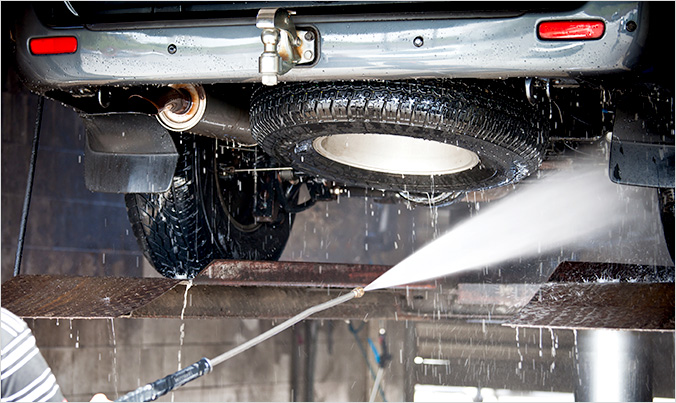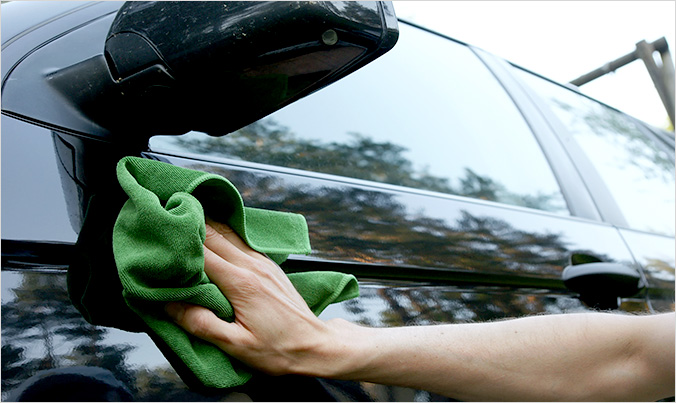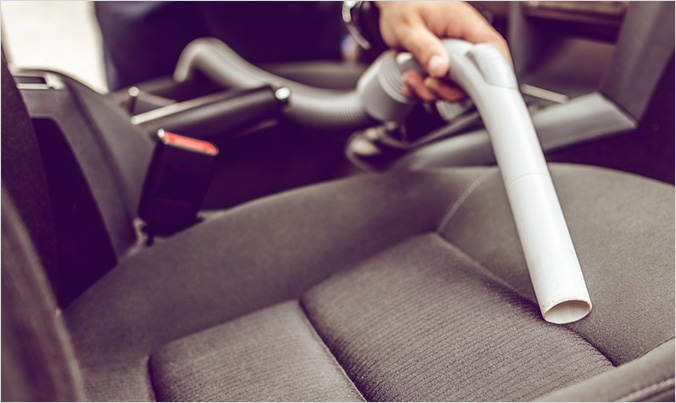
Driving along the coast while watching the sea during the summer holiday season will be one of the best ways to blow your stress away. If you leave your car unattended after driving along the shore where salty winds blow, your car will be under a lot of stress regardless if you’ve been able to successfully rid yourself of your own stress.
This is because sand and salt from the coast can damage your car. So, let's find out how to take care of your car after driving along coastal road during the summer.

Not many people think to wash the bottom of their car after driving on a coastal road. When you wash your car after driving by the sea, you must keep in mind to carefully wash the underbody of your car. This is because salt as well as fine sand tends to cling to the underbody of your car while driving along the coast.
Just as calcium chloride can corrode auto parts in the winter, fine sand and salt from the sea can corrode auto parts, particularly if it remains attached to the surface for a long time. In particular, fine sand tends to find its way into the bottom regions of the car and becomes difficult to thoroughly clean. Extra care is required as fine sand can be left to erode some of the more complex parts in the underbody of the car.
Salty sea water and sand can shorten the lifespan of tires as well as the car. So, after driving along coastal roads, you are strongly advised to carefully clean and remove all the lingering salt that is still clinging to the underbody, wheels and tires of your car.

This is in the same context as removing salt. When sea water comes into contact with your car, you must remove it immediately. You may think, 'Oh well, sea water is also water, so it will just dry off while driving.'
Sea water is rich in salt content and will leave salt stains on your car after drying in the hot summer sunlight. Especially if your car has a dark-colored tone, these salt stains will not be pleasing to the eye. Unless you remove these stains immediately, salt will adhere strongly to the surface and will not be easy to wash off.
In normal car washes, unless you remove water immediately after washing your car, your car will still have stains made when water is combined with dust in the air. Likewise, sea water will leave more serious stains when combined with dirt on your car, unless you promptly take care of it.

The exterior of your car is not the only part on which salt becomes attached while driving along the coast. While you are driving with your car windows open, salty wind will come inside your car and settle on the surface of the seats and the headliner of the roof. In addition, if you get in the car after walking along the beach or playing in the water, salt from your wet clothes and other materials that have come into contact with water can be left on the seats, mats and trunk of your car.
Unless you properly clean the interior of your car, salt will be absorbed into the seats, mats and headliner, which all can quickly absorb water and cause odors or corrosion of parts. It is more difficult to manage the interior of your car as it usually requires more a lot more effort than cleaning the exterior.
So, after sea water is comes into contact with the interior of your car or you drive along the coastal roads for a long time, you need to dry the interior, including seats, by exposing them to direct sunlight, and remove crystallized salt with a vacuum cleaner. You may also remove salt more completely by using a steam cleaner, if one is available. Open all the doors of your car, including the trunk door, and dry your car in a sunny place, and this will also work to prevent odors caused by salty water.
After returning from your great summer vacation, you may suffer from a kind of post-vacation syndrome. So does your car. If you don't take care of your precious car after driving hard along the coast, your car may suffer from a more serious syndrome. So, please take extra care of your car by preventing it from being damaged by sea water and wind. 